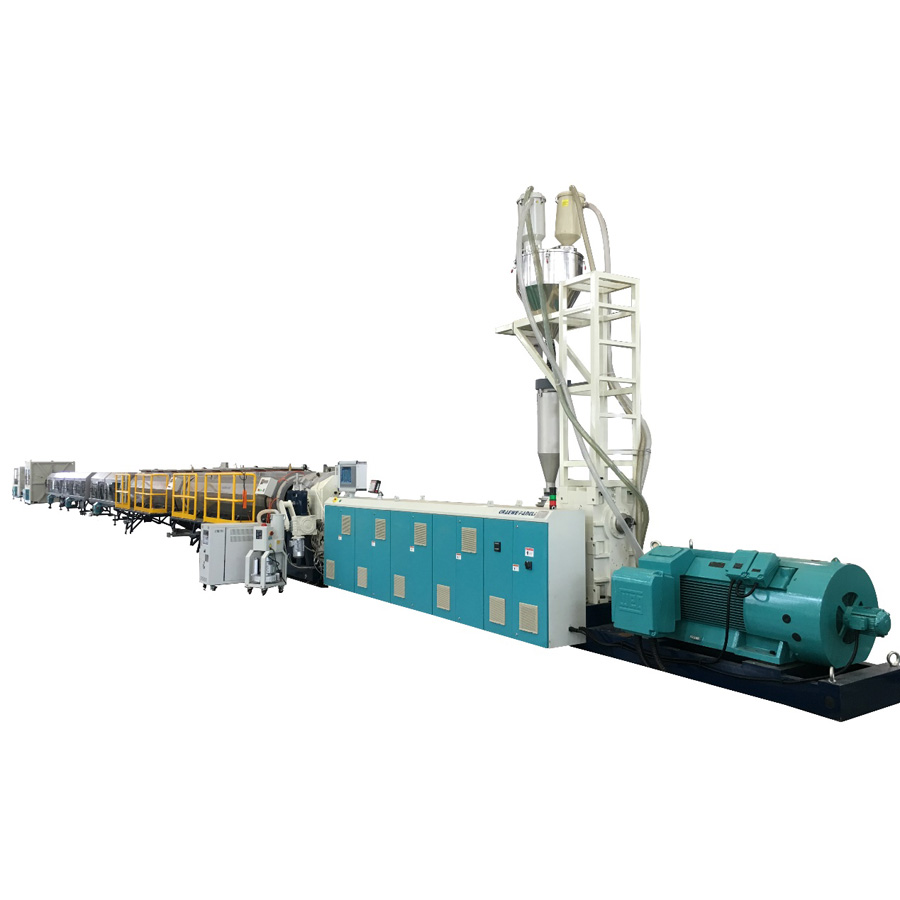- English
- Español
- Português
- русский
- Français
- 日本語
- Deutsch
- tiếng Việt
- Italiano
- Nederlands
- ภาษาไทย
- Polski
- 한국어
- Svenska
- magyar
- Malay
- বাংলা ভাষার
- Dansk
- Suomi
- हिन्दी
- Pilipino
- Türkçe
- Gaeilge
- العربية
- Indonesia
- Norsk
- تمل
- český
- ελληνικά
- український
- Javanese
- فارسی
- தமிழ்
- తెలుగు
- नेपाली
- Burmese
- български
- ລາວ
- Latine
- Қазақша
- Euskal
- Azərbaycan
- Slovenský jazyk
- Македонски
- Lietuvos
- Eesti Keel
- Română
- Slovenski
- मराठी
- Srpski језик
How to make high-Precision and high-Speed Production Plants
2025-04-24
To build a high-precision and high-speed plastic pipe production plant, you need to carefully design, select, and integrate every part of the extrusion line for maximum efficiency, accuracy, and automation.
Here’s a breakdown of how to do it:
✅ 1. Start with Strategic Planning
Define Product Requirements:
Pipe material: HDPE, PVC, CPVC, PPR, multilayer?
Size range: e.g., 16mm–1200mm
Wall thickness, tolerances, production speed
Required certifications: UL, CE, ISO, etc.
Facility Design:
Temperature & dust control
Stable power supply
Water treatment & chiller systems
Space for line layout + maintenance zones
✅ 2. Invest in High-Performance Extrusion Line Components
Extruder:
High-output single screw or twin screw
Bimetallic barrel & nitrided screw for wear resistance
Servo or AC motor with closed-loop temperature and pressure control
Die-Head:
Spiral die-head with flow channel optimization
Uniform melt distribution = better pipe wall thickness
Calibration & Cooling:
Advanced Calibration Sleeve for shaping with tight tolerances
Vacuum calibration tank with multi-stage vacuum zones
Long cooling tanks with precise water temperature control
Haul-off Unit:
Multi-track caterpillar with servo drive synchronization
Low vibration, adjustable clamping force
Cutter:
Flying knife or planetary cutter
Servo or pneumatic control
Auto length setting with ±1mm accuracy
Coiler / Stacker:
Fully automated with tension control
Options for two-station or robot-assisted changeover
✅ 3. Integrate Smart Controls & Automation
Centralized PLC + HMI touchscreen control
SCADA or MES systems for:
Production monitoring
Fault diagnostics
Predictive maintenance alerts
Servo synchronization between extruder, haul-off, cutter, coiler
Automatic start/stop, emergency shutdown, and auto cleaning
✅ 4. Use Quality Supporting Equipment
Gravimetric dosing systems for precise material feeding
Automatic hopper loaders and dehumidifiers
Chillers and cooling towers for efficient temperature management
Laser diameter gauges and ultrasonic wall thickness testers
✅ 5. Implement Quality Control and Continuous Improvement
Online measuring systems for real-time feedback
Non-contact control to reduce damage at high speeds
Regular calibration and ISO-certified quality checkpoints
Optional Add-Ons for Industry 4.0:
Remote machine diagnostics & control (via cloud)
Production traceability with QR/barcode marking
Energy monitoring systems
AI-based optimization for screw speed and throughput




